When you think about Alcatraz, you might think about those who were imprisoned there. But “The Rock” wasn’t just home to some of the most notorious criminals in American history. It was also home to prison staff and their families — and yes, that included children.
Among them was Jolene Babyak, who lived on Alcatraz at two different times in her life while her dad worked as a prison administrator. It’s fascinating to hear Babyak’s recollections of living on the famous island. Her descriptions of everyday life for prison guard families, which I’ll share below, add a rich layer to the unique history of Alcatraz.
Babyak said her family first moved to Alcatraz when she was 7 years old. They eventually moved to San Francisco after a couple of years. When she was 15, her father became the associate warden, and the family moved back to Alcatraz.
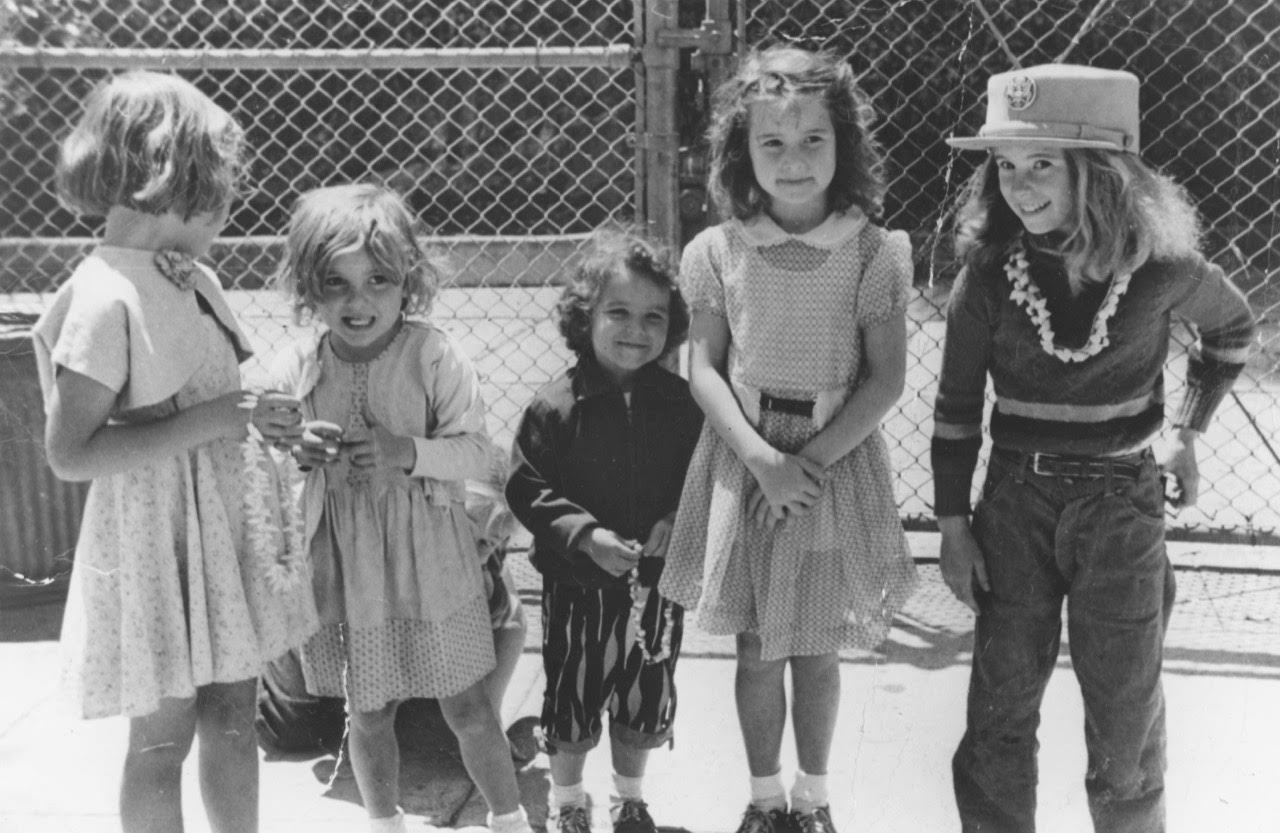
She’s returned to the island since then as a guest rather than a resident, sharing her memories of life on the island. Here’s a photo of Babyak visiting Alcatraz just last year.
Babyak said that during her family’s first move to Alcatraz Island, there were as many as 75 children living in the community. She has nothing but fond memories of living on Alcatraz and called it the “best neighborhood” you could ever live in. Because of security issues, the adults on the island were especially attentive to the children, Babyak said.
There were plenty of events and gatherings taking place to keep everyone busy. And she and the other children got to ride a boat to San Francisco to get to school — pretty cool, right?
Babyak remembers one unnerving moment during the infamous 1962 escape. Four prisoners plotted for months on their escape plan, which involved paper mache heads to conceal their absence in their cells. Three were able to climb up the roof and down the cellhouse building, using a stitched-up raft to enter the San Francisco Bay waters. They were never found, and it’s unclear whether they made it to the mainland or if they died.
In this Q&A, Babyak who is 77, recalls her time on Alcatraz Island and some of the little-known rules for those living there.
Moving to Alcatraz
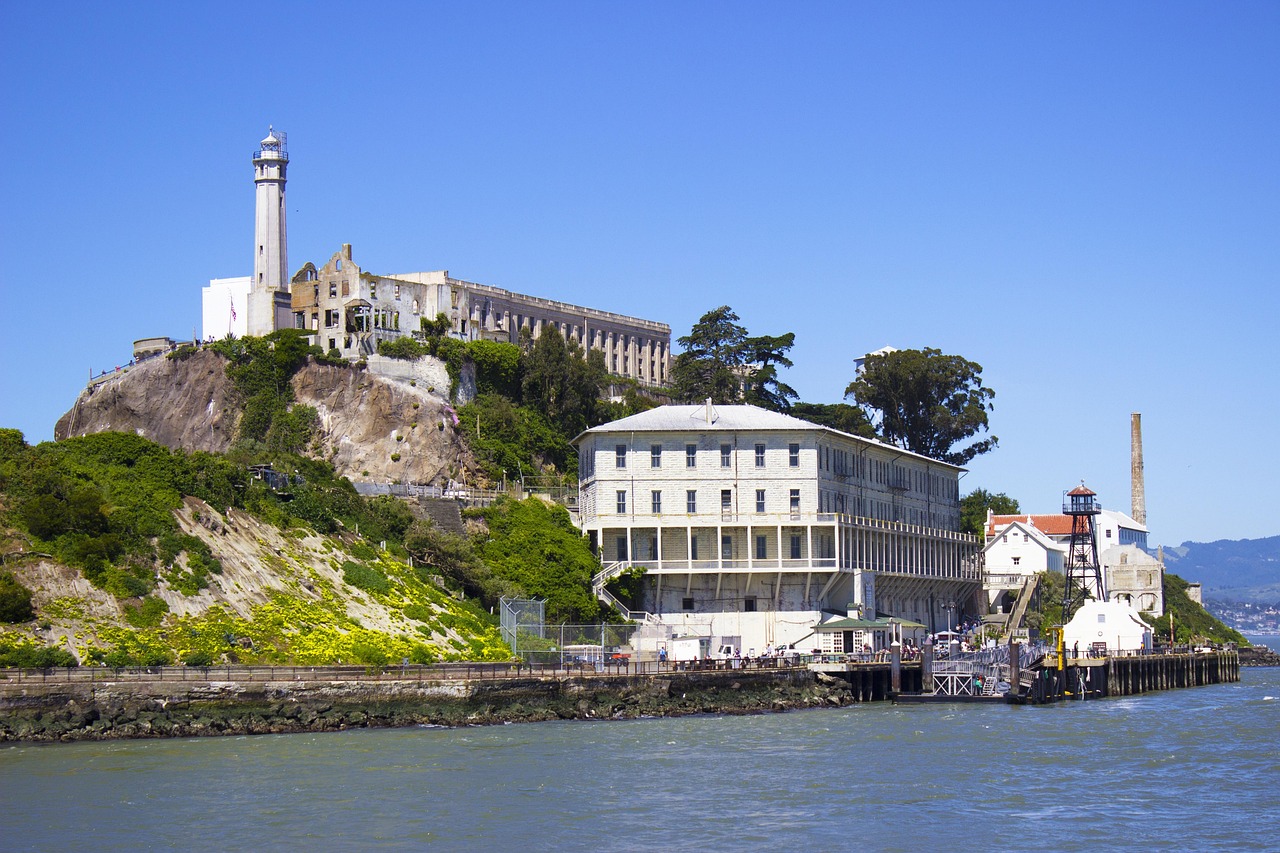
What was it like to move to Alcatraz?
For me, it was like Dorothy in the Wizard of Oz — going from a Kansas farm to the Emerald City. I mean, it was spectacular and lovely.
We arrived in April of 1954. And I was taken to San Francisco by my parents and started school. I probably didn’t even see any prisoners because I was at school the same hours that a few outside workers could be seen.
For me, it was like Dorothy in the Wizard of Oz — going from a Kansas farm to the Emerald City.
By the time I got back, they were probably in the cellhouse. So I only saw prisoners in the summertime and only from a distance. And they would wave at us, you know, I was 7 or 8, and they would wave at us as a little kid.
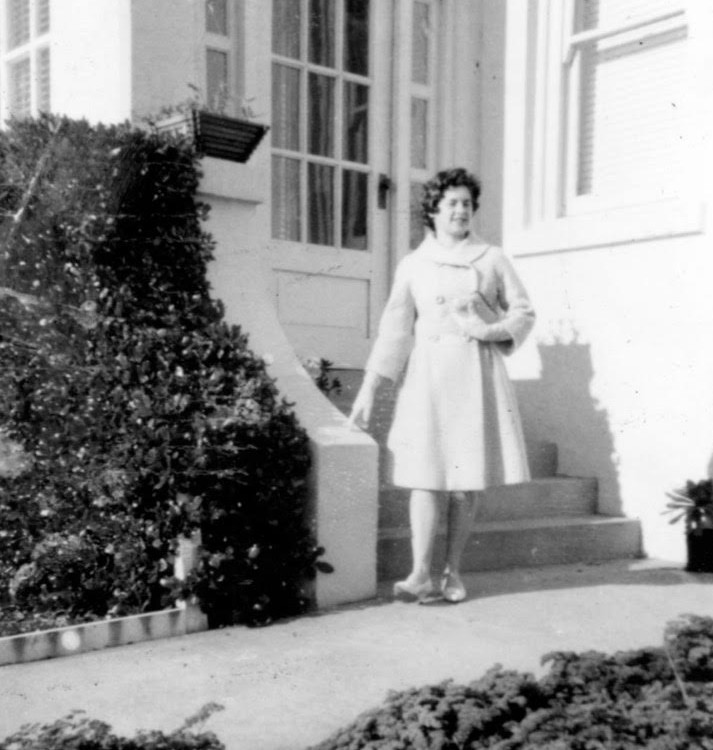
When I was 15, I didn’t look at them long enough to get their attention because that was more awkward for me. But as a little kid, we were kind of shy about it and kind of thrilled that they noticed us.
Life on “The Rock”
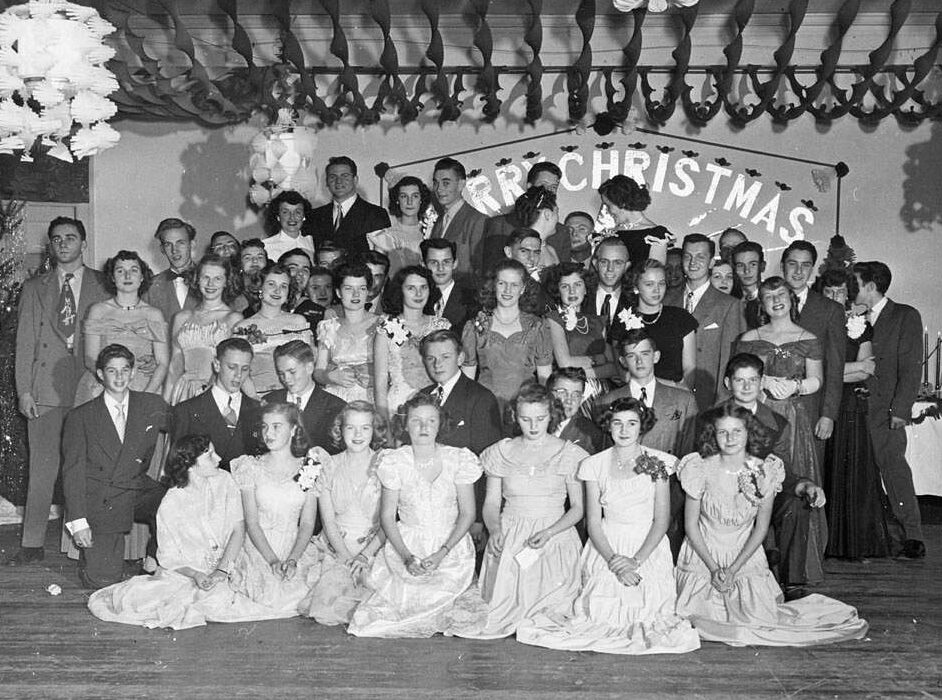
Where exactly were the families compared to the prison?
So the island is in the shape of a boat, right? And the prison is up top, right? Our housing… is over on the east side of the island. You’ll see pictures with a big, flat concrete space and there’s apartments around it.
The prisoners were focused on the opposite side of the island. And they escaped in that direction. They never came down to our area on escapes.
What was life on the island like?
From the very beginning, people started having annual events. The teenagers always had dances, and we could invite kids over from the city. All of our dates wanted to come over. We would hop on the boat and go get them and bring them over. And the midnight boat will take them back.
The teenagers always had dances, and we could invite kids over from the city. All of our dates wanted to come over.
We had a Western party every year where everybody dressed up and did skits, and it was totally silly, and we had potlucks every month where the kids often would serve the coffee or serve the desserts, and everybody [would] bring down a wonderful dish.
All kinds of adult things like retirement parties, but it was fun for the kids too because they were always involved.
And it was just wonderful. That was the reason I think why everybody loved it so much is because the community was actively involved in our lives. And that is a good thing.
Was there a group of parents in charge of activities?
Yeah, there were people that sort of took charge, depending on their personality.
When I was a little kid, the captain of the guards, Phil Bergen, he was kind of a gruff. He took it upon himself to organize a children’s garden and we had a little contest. And so every Saturday we’d be out there digging, and planting and dragging over water and watering our plants and painting our names on the seawall.
There was a soda fountain, and they made sure they had all the Cokes and ice creams.
There were men that took care of the bowling alley. There was a little two-lane bowling alley left over from the military days. There were people that would chaperone. The bowling alley was down at the Officer’s Club, and you could go there at night or if there was an event. You couldn’t just wander down there during the day. That was closed off.
Everything was closed until the prisoners were in their cells — in the cellhouse and in their cells. Then the men that would take care of the bowling alley. They would go down there and open it up, and there was a soda fountain, and they made sure they had all the Cokes and ice creams.
How did you get supplies and things that you needed to the island?
You went to the city. I mean, there was a little store [on the island] for surprise needs: cigarettes, wonder bread, bacon, ice cream sandwiches, and popsicles. I don’t think they sold any liquor or anything like that, but just all the necessities. You went to the city, the Safeway or wherever, and you bought your supplies and then came over on the boat.
Everything was on the boat. If you bought a Christmas tree, a real Christmas tree, you brought it over on the boat. Consequently, you didn’t buy too much.
Rules of Alcatraz and what happens when there’s an escape
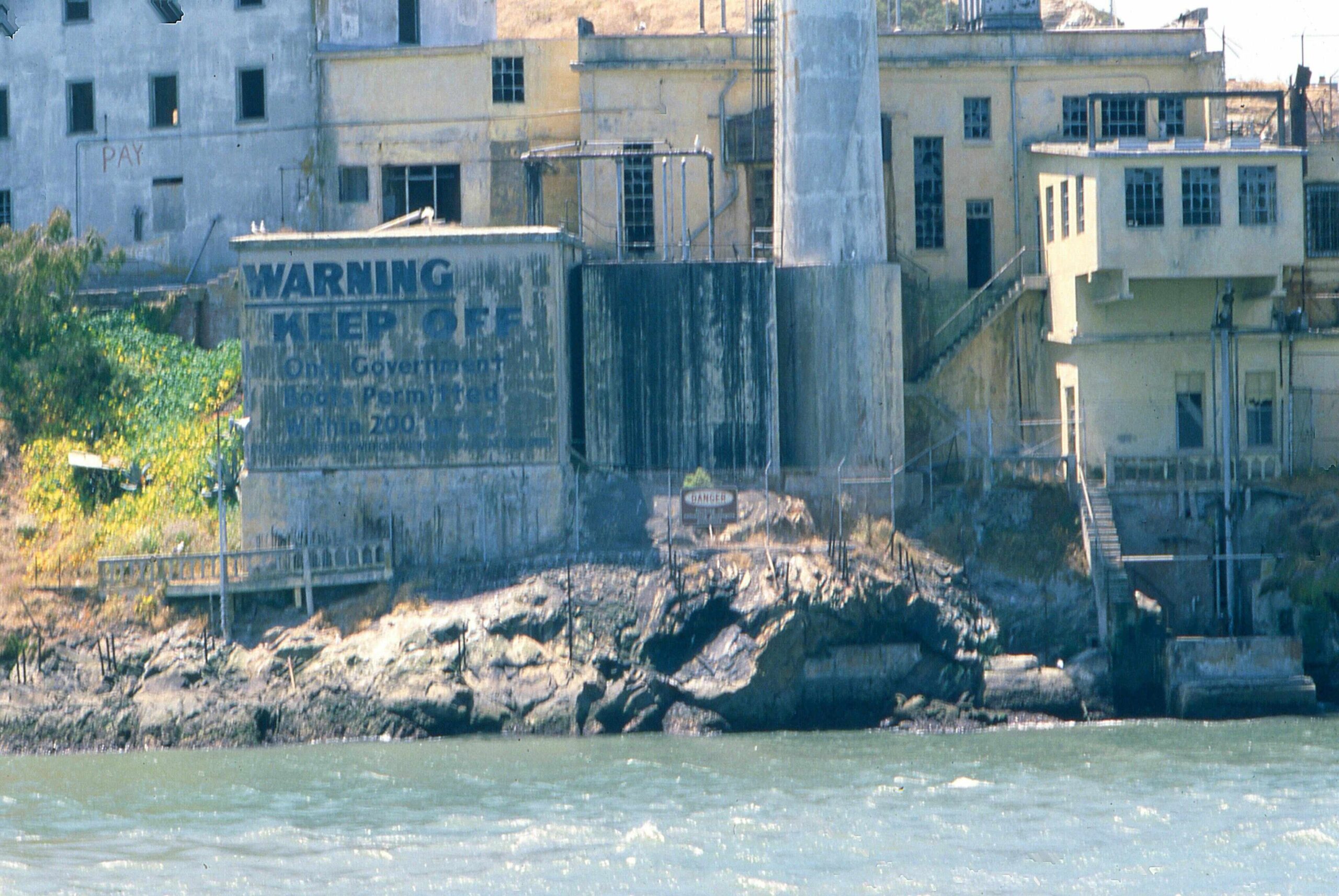
What rules were in place that people might find interesting?
Absolutely no contact and no talking to prisoners — No. 1 rule.
Prisoners were not allowed to yell at us or whistle or nothing. They can wave at the little kids. But beyond that, they never gestured to us. You didn’t go down to the dock unless you were getting on the boat because there were prisoners that worked on the dock. And they would always stop whenever the boat docked.
The key to the motor went up a lanyard to the tower officer. He kept the key. And he was an armed guard who was of course watching the prisoners. And then we would file in on and off the boat. So those were big rules. Two thirds of the island was off limits.
Absolutely no contact and no talking to prisoners — No. 1 rule… Two thirds of the island was off limits.
I’ll tell you something else that I think is kind of interesting. The garbage was collected by the prisoners. So you had two prisoners and a guard driving the truck, and they would go around and pick up the garbage. So you had to be very, very, very careful about what you put in the garbage. No utensils, no metals, no broken glass, no newspapers. Those of us who had newspapers, those had to be wrapped up and set aside.
What do you remember of the 1962 escape?
I was 15. The siren woke me up and I’d never heard it before, but you couldn’t mistake it. It was a very loud and very aggressive siren, and it woke everybody up.
My mother was in the house with me, and she met me on the stairs, and she said, “Get dressed, there’s been an escape, we have to search the house.”
And I’m sure my first question was, “Do you think they’re still here?” And being the practical woman, she said, “Nah, they probably left last night.”
So I was like, “Oh, OK.” And I was late for school. But I didn’t even have to bring a note. So that was cool.
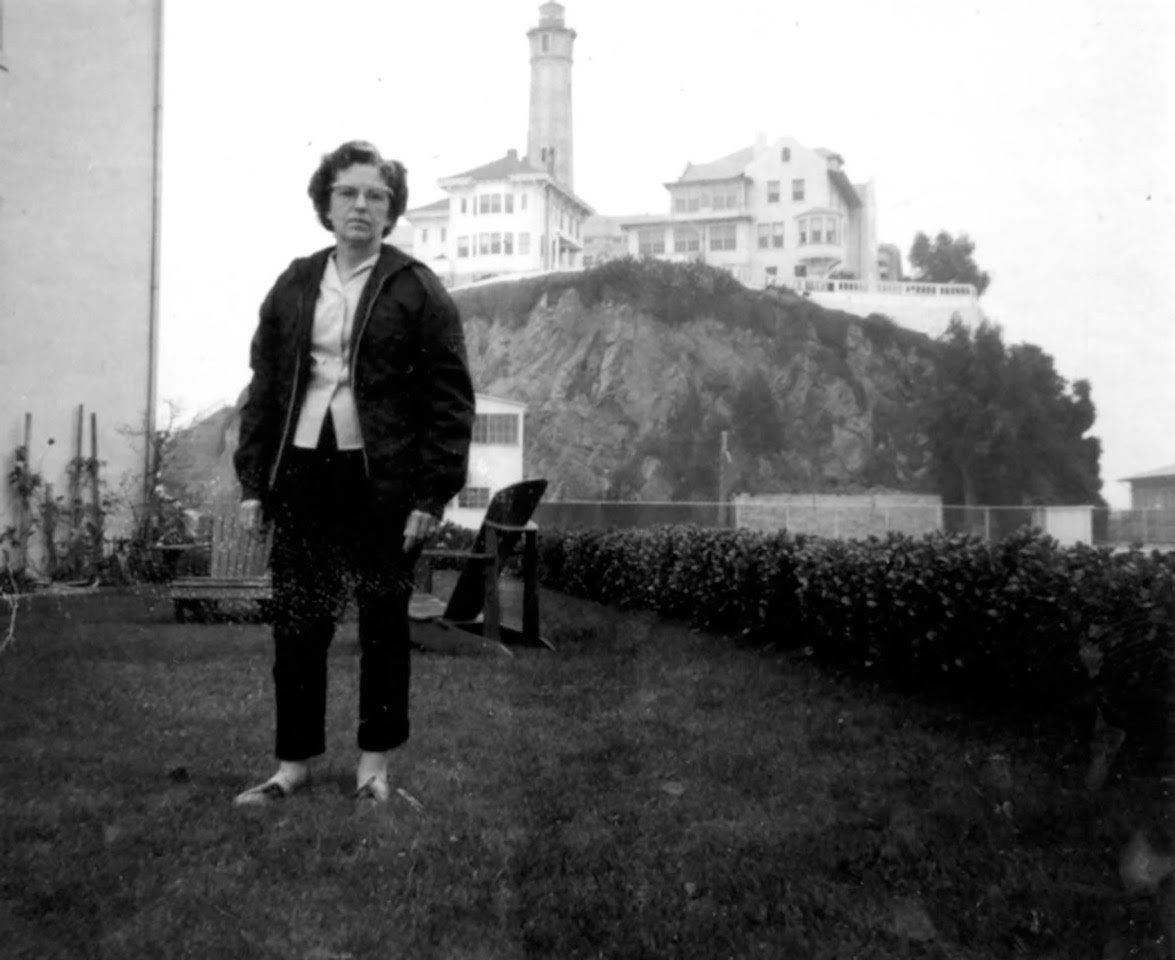
The island was locked down for four hours, four or five hours. In movies, things get all chaotic and scary. But in real life, things tamp down. Everything stops. And then there was a lot of brouhaha because they were never found.
Alcatraz today

I hope you enjoyed this interview with someone who actually lived on Alcatraz Island! A lot has changed here since the island became part of the National Parks Service, opening to tourists in 1973.
But for many years, The Rock was truly just another San Francisco neighborhood for prison guard families — albeit a very unique one in the middle of the Bay. When visiting Alcatraz, take time to enjoy the natural beauty, including its gardens and birds, and get a closer look at the many historical structures beyond the infamous cellhouse. There’s so much to see here.
Experience it all when you sign up for one of our tours, which include a cruise to this fascinating national landmark.
For nearly 30 years, the Alcatraz Federal Penitentiary, off the coast of San Francisco, was America’s most infamous maximum-security prison. Ever heard of Al “Scarface” Capone? Or George “Machine Gun” Kelly? Both did time on Alcatraz Island.
But it wasn’t just for gangsters. Most of its prisoners were sent there because they wouldn’t conform to the rules of other prisons. At Alcatraz, following the rules was mandatory if inmates wanted to earn privileges beyond the food, clothing, shelter, and medical care they were required to receive.
Alcatraz Island wasn’t always a prison though.
It was inhabited solely by pelicans before it became a military reservation in 1850. It’s how it got its former name, “La Isla de los Alcatraces” — Island of the Pelicans in Spanish. But it didn’t take long for the government to turn the island into a military prison for traitors and deserters.
In the 1930s, the government once again found the island’s remote location ideal for a high-security prison, officially, the Alcatraz Federal Penitentiary, a place that would cut its inmates off from the outside world.

From 1934-1963, Alcatraz, aka “The Rock,” was considered America’s strongest prison. And its reputation for being impossible to escape (until, of course, some prisoners did) was one of the main reasons why notorious criminals like Al “Scarface” Capone and George “Machine Gun” Kelly were sent there.
Not all of the 1,576 prisoners held over the years were dangerous gangsters. Some were incarcerated to send a message. Take Frank Lucas Bolt who was the first prisoner transferred to Alcatraz after being convicted of sodomy — FBI Director J. Edgar Hoover signed the admission papers himself.
Today, Alcatraz welcomes tourists eager to learn about its dark history, rather than mobsters and gangsters. And you can cruise to the island to hear all about it!
Before you go, we’ve rounded up its most notorious prisoners through the years. Let’s check out their rap sheets.
1. Prisoner AZ-85: Al Capone, America’s most famous mob boss
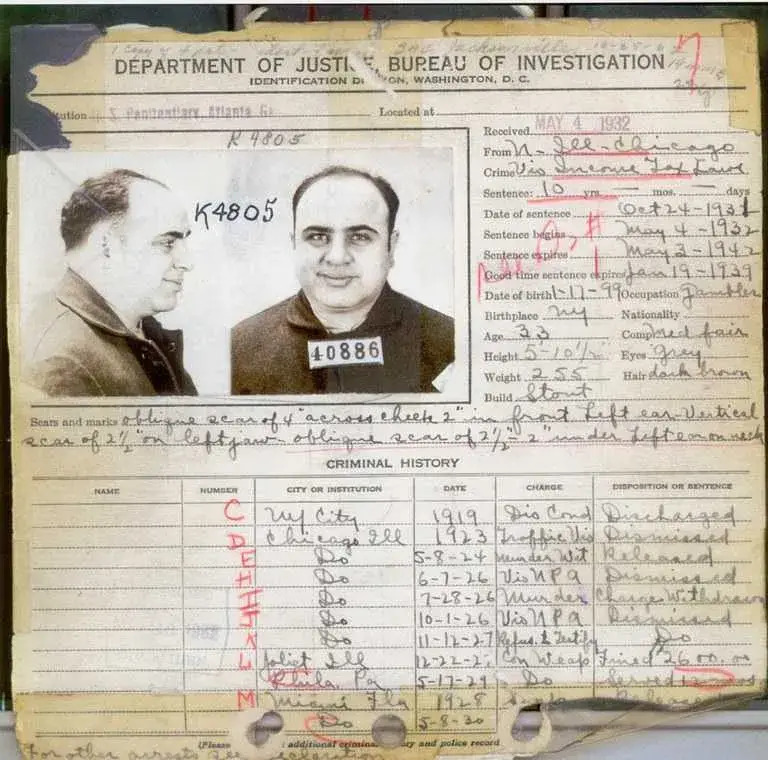
Nickname: Scarface, a nickname for the scars on his face that he got in a bar fight
Criminal record: While Al Capone holds the title as Chicago’s most notorious mob boss, he’s also remembered as a modern-day Robin Hood who was always on the side of “the people.”
He started his life of crime at a young age, and was finally indicted for income tax evasion in 1931 when the federal government couldn’t get him for his role in the St. Valentine’s Day Massacre.
Before he was sent to Alcatraz, Capone was living it up in Atlanta and other prisons, until he was caught bribing the guards for luxuries like home-cooked meals and comfy bedding. He might have tried to get the same privileges when he first arrived at “The Rock,” but those efforts came to nothing. Instead he became an avid reader and learned to play the banjo during his sentence.
Time at Alcatraz: 1934-1939
2. Prisoner AZ-117: George Kelly, a small-time bootlegger turned kidnapper (for love?)

Nickname: Machine Gun
Criminal record: George “Machine Gun” Kelly started bootlegging as a side hustle when he couldn’t find a steady job that paid a decent wage. He was mostly a small-time criminal until he met and married Kathryn Thorne, who encouraged his bank-robbing sprees and created the image of “Machine Gun Kelly” for underground marketing purposes.
Kelly was eventually sent to Leavenworth prison in Kansas for kidnapping a wealthy oil tycoon, but he was transferred to Alcatraz when he threatened to escape.
Though he often boasted to his fellow prisoners about murders and robberies he never actually committed, Kelly proved to be a model inmate. He worked in the laundry, held an administrative role in the industries office, and even served as an altar boy in the prison chapel.
Time at Alcatraz: 1934-1951
3. Prisoner AZ-564: Robert Stroud, the Birdman of Alcatraz
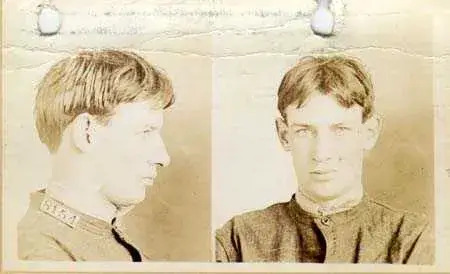
Nickname: The Birdman
Criminal record: Despite his nickname, Robert Stroud never actually cared for any birds in Alcatraz, but rather during the time he spent in Leavenworth.
It started with a single wounded canary he found in the recreation yard and developed into a hobby where he would nurse birds to health and even breed them. A rather gentle hobby for a dangerous criminal who was often relegated to solitary confinement.
After carefully studying their habits, he even wrote two books on canaries and their diseases and his observations would benefit research on canaries for years to come. In 1962, he became the subject of the major motion picture “Birdman of Alcatraz” starring Burt Lancaster but was never allowed to see it.
Time at Alcatraz: 1942-1959
4. Prisoner AZ-325: Alvin Karpis, the man with the sinister smile

Nickname: Creepy Karpis, so-called for his “creepy” smile
Criminal record: Alvin Karpis holds the record for the prisoner with the longest sentence at Alcatraz: 26 years. He was sentenced to life imprisonment for 10 murders, six kidnappings, and one robbery. Legend has it that J. Edgar Hoover even captured Creepy Karpis himself.
In 1931, he joined forces with “The Bloody Barkers,” forming one of the most wanted criminal gangs of the depression era. The Karpis-Barker gang was known for robbing banks, hijacking mail deliveries, and kidnapping. It was a kidnapping that saw Karpis’ and the gang’s downfall, and he and Arthur Barker (another criminal on this list!) would both serve time at Alcatraz.
Time at Alcatraz: 1936-1959
5. Prisoner AZ-268: Arthur Barker, one of Ma Barker’s boys
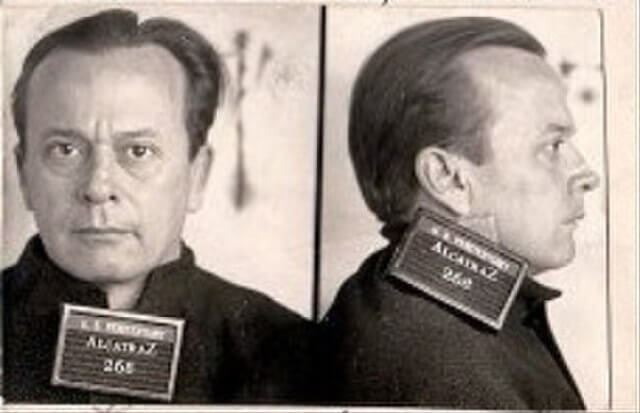
Nickname: Doc
Criminal record: Arthur “Doc” Barker was one of Kate “Ma” Barker’s sons, who were committing crimes from an early age. The Bloody Barkers were a deadly group, known for killing anyone, including innocent bystanders, who got in their way.
Barker shot and killed a policeman during an armed robbery committed by the Karpis-Barker gang, but it was the kidnapping of two wealthy Minnesota men that eventually led to his capture.
While at Alcatraz, he planned to escape with two other prisoners but was shot and killed by the guards.
Time at Alcatraz: 1935-1939
6. Prisoner AZ-1428: James Bulger, South Boston’s “Robin Hood”
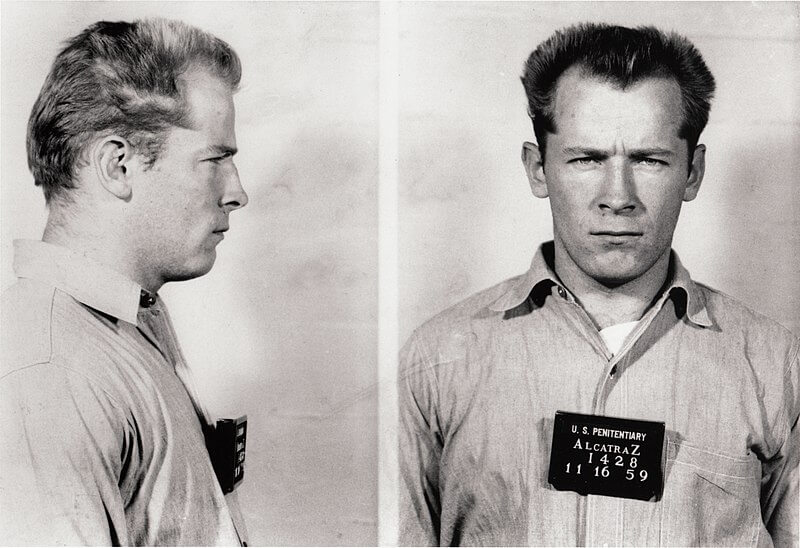
Nickname: Whitey
Criminal record: James “Whitey” Bulger’s loyalty to South Boston sometimes led to his depiction in local folklore as a Robin Hood figure who did wrong only to protect the neighborhood’s residents. That wrongdoing allegedly involved targeting drug kingpins and organizers of illegal gambling operations.
Preferring the streets to the classroom, Bulger was in trouble with the law from starting at a young age. He joined the Air Force and completed basic training, but he acquired a record of countless assaults and was arrested in 1950 for going AWOL.
When he was sent to Alcatraz, he had started serving a 20-year sentence in Atlanta for perpetrating a string of armed robberies.
He was re-arrested as late as 2011 and later died in prison.

Time at Alcatraz: 1959-1962
7. Prisoner AZ-110: Roy G. Gardner, the last great American train robber
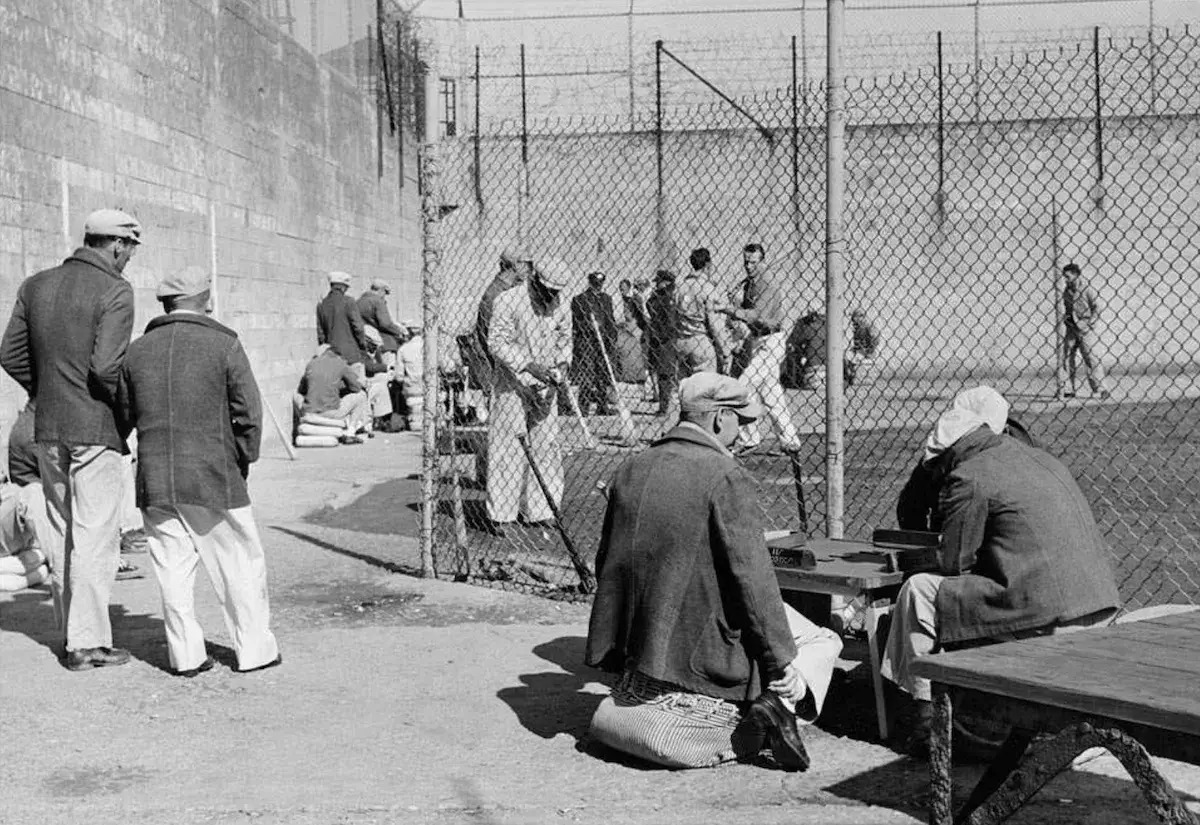
Nickname: “Smiling Bandit,” “Mail Train Bandit,” “King of the Escape Artists”
Criminal record: During the Roaring Twenties, Roy Gardner was America’s most notorious outlaw and infamous prison escapee. Once captured, he tried to tunnel under a wall, and later led a prison break holding two guards and the captain hostage.
Because of his many attempts to flee, Gardner was eventually transferred to Alcatraz, which he later described as “the toughest, hardest place in the world.” He even wrote a biography about his time there, “Hellcatraz,” which recounts tales of his life in the bleak prison.
Time at Alcatraz: 1934-1939
8. Prisoner AZ-1441: Frank Lee Morris, Alcatraz’s great escape artist
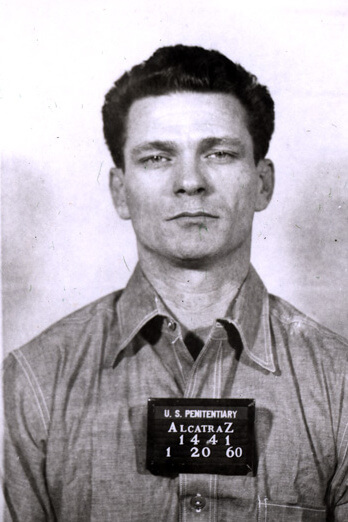
Nickname: No official nickname despite being a skilled prison escape artist
Criminal record: By the time he was sent to Alcatraz, Frank Lee Morris had not only spent his life in the prison system, but had developed an expertise in how to escape them. His escape attempts are what led federal officials to send Morris to the one prison that had thus far been impossible to escape: Alcatraz.
On the night of June 11, 1962, Morris and the Anglin brothers managed to escape Alcatraz after months of detailed planning. The FBI resolved that the Great Escape couldn’t have been successful — the men must have drowned. Yet some people argue that the escape was successful because the prisoner’s bodies were never found.
Time at Alcatraz: 1960-1962
Infamous Alcatraz inmates and more
Think Frank Morris and the Anglin brothers could have escaped Alcatraz? There’s only one way to find out. If you’re planning a trip to San Francisco, then be sure to make Alcatraz Island one of your stops.
Of course, you’ll learn about much more than these notorious Alcatraz prisoners if you take an Alcatraz tour. You’ll hear about the many roles the island has held over the years, visit the gardens and scenic viewpoints, and you can even tour Fisherman’s Wharf, where your cruise departs from, with a local to see the best sights.
There’s so much rich history on Alcatraz and the surrounding area. Don’t miss it on your visit to the Bay Area!